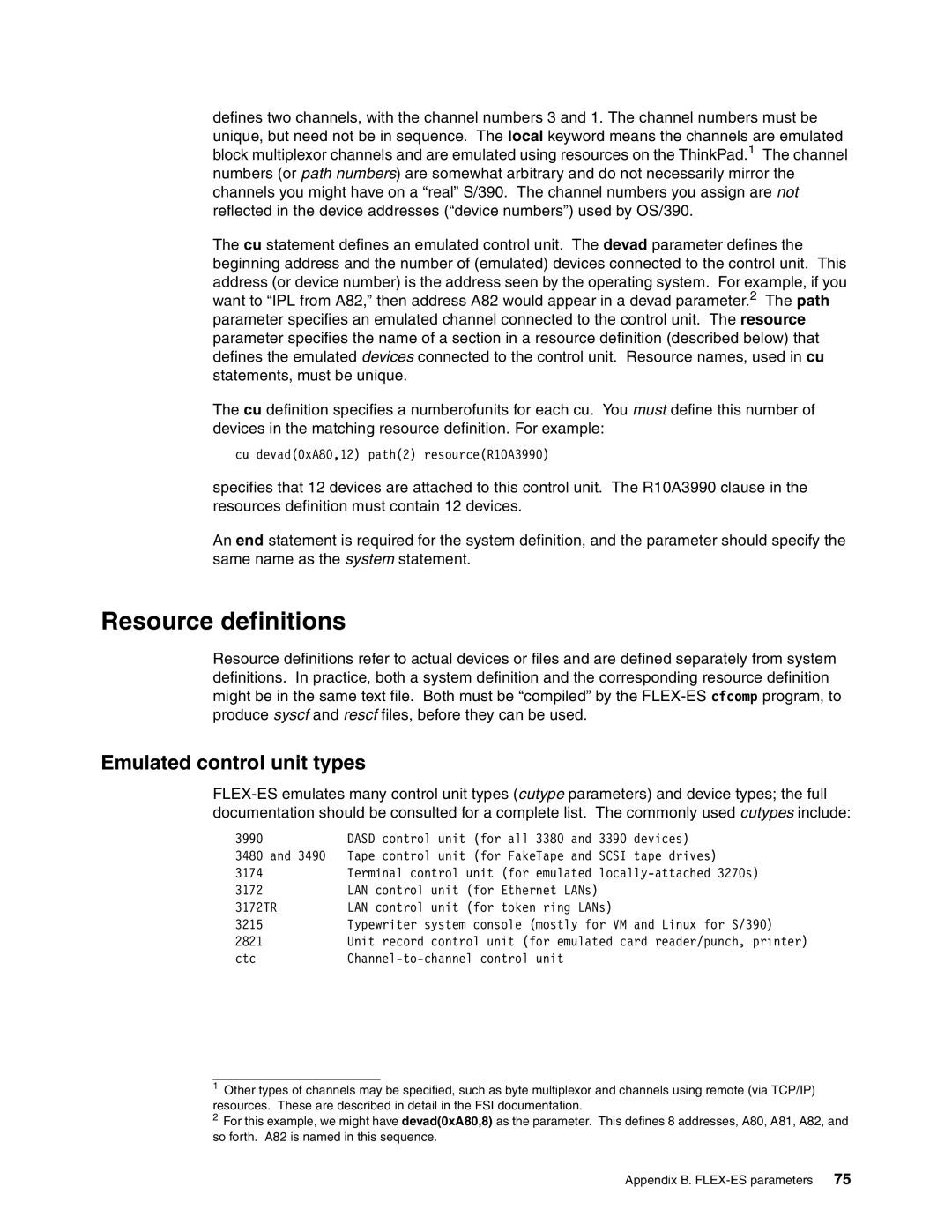defines two channels, with the channel numbers 3 and 1. The channel numbers must be unique, but need not be in sequence. The local keyword means the channels are emulated block multiplexor channels and are emulated using resources on the ThinkPad.1 The channel numbers (or path numbers) are somewhat arbitrary and do not necessarily mirror the channels you might have on a “real” S/390. The channel numbers you assign are not reflected in the device addresses (“device numbers”) used by OS/390.
The cu statement defines an emulated control unit. The devad parameter defines the beginning address and the number of (emulated) devices connected to the control unit. This address (or device number) is the address seen by the operating system. For example, if you want to “IPL from A82,” then address A82 would appear in a devad parameter.2 The path parameter specifies an emulated channel connected to the control unit. The resource parameter specifies the name of a section in a resource definition (described below) that defines the emulated devices connected to the control unit. Resource names, used in cu statements, must be unique.
The cu definition specifies a numberofunits for each cu. You must define this number of devices in the matching resource definition. For example:
cu devad(0xA80,12) path(2) resource(R10A3990)
specifies that 12 devices are attached to this control unit. The R10A3990 clause in the resources definition must contain 12 devices.
An end statement is required for the system definition, and the parameter should specify the same name as the system statement.
Resource definitions
Resource definitions refer to actual devices or files and are defined separately from system definitions. In practice, both a system definition and the corresponding resource definition might be in the same text file. Both must be “compiled” by the
Emulated control unit types
3990 |
| DASD control unit | (for all 3380 and | 3390 devices) | |
3480 | and 3490 | Tape control unit | (for FakeTape and | SCSI tape drives) | |
3174 |
| Terminal control unit | (for emulated | ||
3172 |
| LAN control unit (for | Ethernet LANs) |
| |
3172TR | LAN control unit (for | token ring LANs) | |||
3215 |
| Typewriter system | console (mostly for VM and Linux for S/390) | ||
2821 |
| Unit record control unit (for emulated card reader/punch, printer) | |||
ctc |
|
| |||
1Other types of channels may be specified, such as byte multiplexor and channels using remote (via TCP/IP) resources. These are described in detail in the FSI documentation.
2For this example, we might have devad(0xA80,8) as the parameter. This defines 8 addresses, A80, A81, A82, and so forth. A82 is named in this sequence.
Appendix B.
